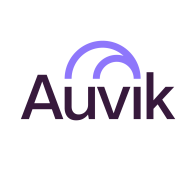

VMware Aria Operations for Applications and Auvik Network Management compete in IT operations management, with Auvik Network Management outperforming in overall features due to its comprehensive network functionalities, while VMware Aria Operations for Applications is favored for its pricing and support.
Features:VMware Aria Operations for Applications provides predictive analytics, performance monitoring, and proactive management tools beneficial for application performance management. Auvik Network Management offers network visibility, automated documentation, and robust network management capabilities, enhancing IT infrastructure oversight and contributing to its superior feature set.
Room for Improvement:VMware Aria Operations for Applications could enhance its network management tools, improve scalability for larger networks, and offer more detailed documentation. Auvik Network Management may improve its application performance management, refine its pricing model for better cost efficiency, and enhance its user interface for more intuitive navigation.
Ease of Deployment and Customer Service:VMware Aria Operations for Applications supports a straightforward deployment process with effective customer service, facilitating integration into existing systems. Auvik Network Management, utilizing cloud-based deployment, allows for rapid installation and seamless integration, with its network-centric support infrastructure boosting deployment efficiency.
Pricing and ROI:VMware Aria Operations for Applications is presented as a cost-effective choice with strong ROI for application-focused businesses, with pricing details often dependent on specific needs. Auvik Network Management involves a higher initial cost but provides substantial ROI through enhanced network capabilities, justifying the investment for comprehensive network coverage.
| Product | Market Share (%) |
|---|---|
| Auvik Network Management (ANM) | 1.1% |
| VMware Aria Operations for Applications | 1.9% |
| Other | 97.0% |


| Company Size | Count |
|---|---|
| Small Business | 140 |
| Midsize Enterprise | 31 |
| Large Enterprise | 21 |
| Company Size | Count |
|---|---|
| Small Business | 4 |
| Midsize Enterprise | 1 |
| Large Enterprise | 10 |
Auvik Network Management provides comprehensive network monitoring with competitive pricing, offering advanced features and free management of non-critical devices.
Auvik Network Management is known for its intuitive interface and real-time network visibility. Users benefit from features like automated network discovery, mapping, alerting, and TrafficInsights for cost-effective bandwidth monitoring. Its integration with ConnectWise and ticketing systems enhances device inventory updates, SNMP monitoring, and network troubleshooting. However, improvements are needed in reporting, integration capabilities, network map accuracy, customization, and alert configuration. Users suggest expanding device support and improving navigation and monitoring features.
What are Auvik's most important features?Auvik Network Management is widely used by managed service providers and enterprises for network monitoring across industries. It enables efficient management of firewalls, switches, routers, and ensures connectivity over multiple locations. This solution aids in identifying issues, automating backups, and facilitating remote access, offering critical insights on network traffic and device performance. Companies leverage its features to enhance network management and performance.
VMware Tanzu Observability by Wavefront is a powerful tool for monitoring and analyzing the performance and availability of applications and infrastructure in real-time.
With its comprehensive monitoring capabilities, visualizing and analyzing data becomes effortless. The real-time alerting system ensures timely issue resolution, while scalability and a user-friendly interface provide a seamless experience for smooth operations.
We monitor all Cloud Monitoring Software reviews to prevent fraudulent reviews and keep review quality high. We do not post reviews by company employees or direct competitors. We validate each review for authenticity via cross-reference with LinkedIn, and personal follow-up with the reviewer when necessary.